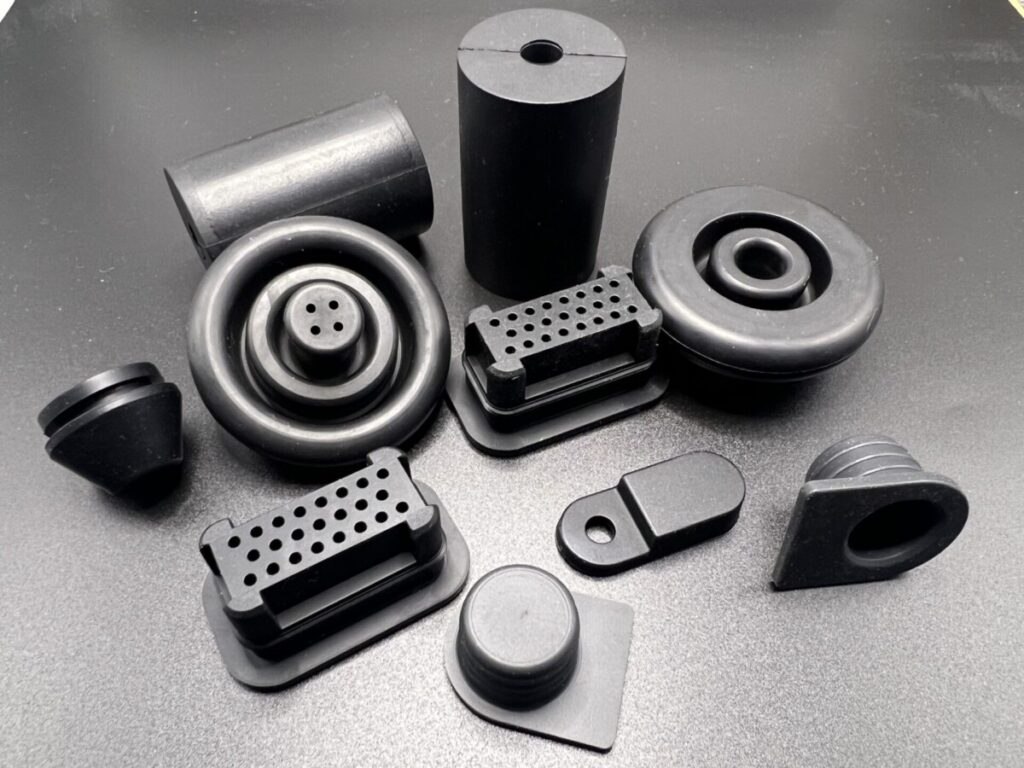Rubber parts are essential components used across industries, from medical devices and automotive systems to consumer electronics and household products. Known for their flexibility, durability, and resistance to extreme conditions, rubber parts can be designed and manufactured in countless forms, such as seals, gaskets, keypads, tubing, and protective covers.
In this article, we will explain what rubber parts are, the different types and materials, and their common applications in modern industries.
What Are Rubber Parts?
Rubber parts are engineered components made from natural or synthetic rubber materials. They are valued for their elasticity, resilience, and ability to create seals, absorb shocks, and provide insulation.
Typical examples include:
Rubber protective covers – shield sensitive electronic components
Rubber gaskets and seals – prevent leaks of liquids or gases
Rubber keypads – used in remote controls, medical devices, and industrial machines
Rubber tubing and hoses – transport fluids in medical and automotive systems
Rubber feet and bumpers – protect surfaces and absorb vibrations
Types of Rubber Materials
Different rubber materials are chosen depending on performance needs:
1. Natural Rubber (NR)
- High elasticity and resilience
- Excellent for shock absorption
- Used in tires, vibration mounts, and footwear
2. Silicone Rubber (VMQ)
- Exceptional heat and cold resistance (-60°C to +200°C)
- Excellent for medical, food-grade, and electronic applications
- Non-toxic, flexible, and UV-resistant
3. EPDM Rubber
- Strong resistance to weather, ozone, and chemicals
- Ideal for outdoor seals, gaskets, and automotive parts
4. Nitrile Rubber (NBR)
- Excellent oil and fuel resistance
- Commonly used in seals, O-rings, and hoses in automotive and industrial systems
5. Neoprene Rubber (CR)
Used in seals, gaskets, wetsuits, and protective gear
Good chemical and flame resistance
Key Benefits of Rubber Parts
Rubber components are widely used because they offer:
- Elasticity and flexibility – easily compressed and restored to shape
- Durabilité – withstands wear, weather, and environmental stress
- Polyvalence – customizable in size, hardness, and color
- Insulation properties – protects against electricity and vibration
- Cost-effectiveness – mass production with high consistency
Applications of Rubber Parts
Rubber parts play a crucial role across industries:
Medical Industry
- Silicone rubber parts for tubing, seals, and keypads in medical devices
- Biocompatible and easy to sterilize
Automotive Industry
- Rubber seals, gaskets, and hoses for fuel, air, and cooling systems
- Shock absorbers and vibration dampeners
Electronics and Consumer Products
- Rubber keypads for remote controls and calculators
- Rubber feet and protective bumpers for appliances
Industrial Applications
- Rubber gaskets for pumps and machinery
- Protective covers in harsh environments
Conclusion
Rubber parts are versatile, durable, and essential in today’s world—whether in medical devices, automotive systems, electronics, or industrial equipment. With the right material and design, they provide long-lasting performance and cost-effective solutions.
If you’re looking for high-quality silicone rubber parts, contact us for a custom solution that fits your exact requirements.
If you’re ready to upgrade your membrane switch design, contact us today.
